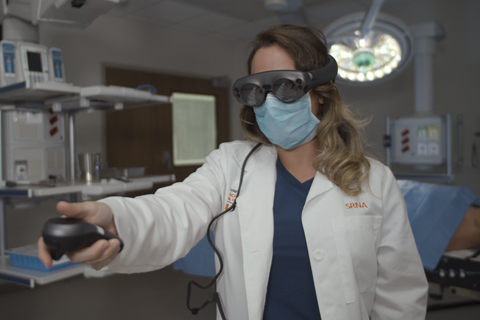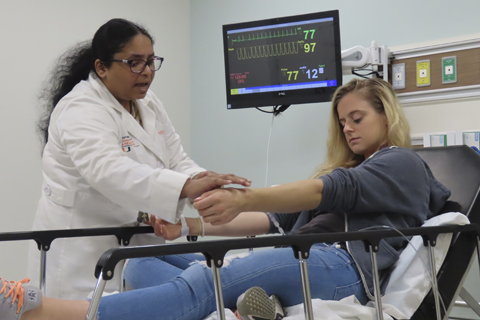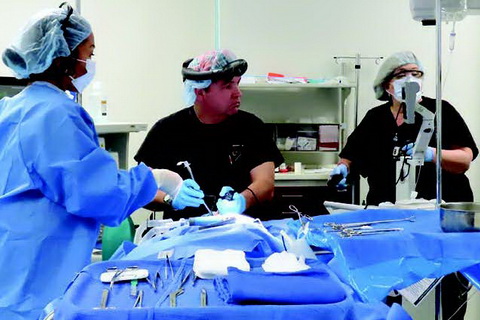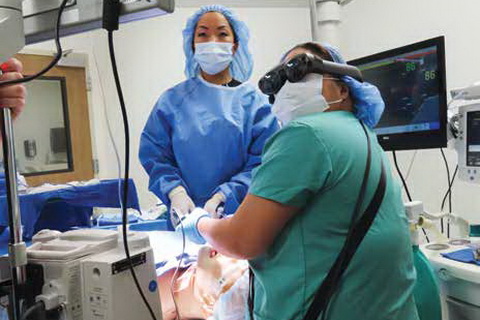Simulation helps clinicians practice or become skilled in a technique before treating patients. There are many types of simulation, including the use of mannequins / simulants, standardized patients (actors), part-task trainers, and augmented / virtual reality. Simulating the response to specific threats can identify gaps in care processes and establish high levels of individual and team performance. In addition, simulation can offer researchers access to events that defy normal observation in a safe and controlled environment. Using simulation to complement established research methods for the study of how to improve the quality and safety of healthcare, the advancement of health care technology, and affecting policy on community safety procedures is a core tenant of the mission of S.H.A.R.E.
 |
Anatomy of an Operating Room
A mixed-reality simulation conceived at SONHS teaches new nurse anesthesia students their way around an operating room
Read the Full Story >
|
 |
Clinical Education Combats Trafficking
An award-winning simulation-based program puts nursing students face to face with the public health crisis of human trafficking to help them recognize potential victims.
Read the Full Story >
|
 |
Nursing Students Leap into the Future
From simulating fires in the operating room to incivility in the workplace, the School of Nursing and Health Studies is an enthusiastic testing ground for Magic Leap technology.
Read the Full Story >
|
 |
Big Renewal for Nurse Anesthesia Initiative
Increased U.S. funding speaks to national need for nurse anesthetists in medically underserved regions
Read the Full Story >
|







